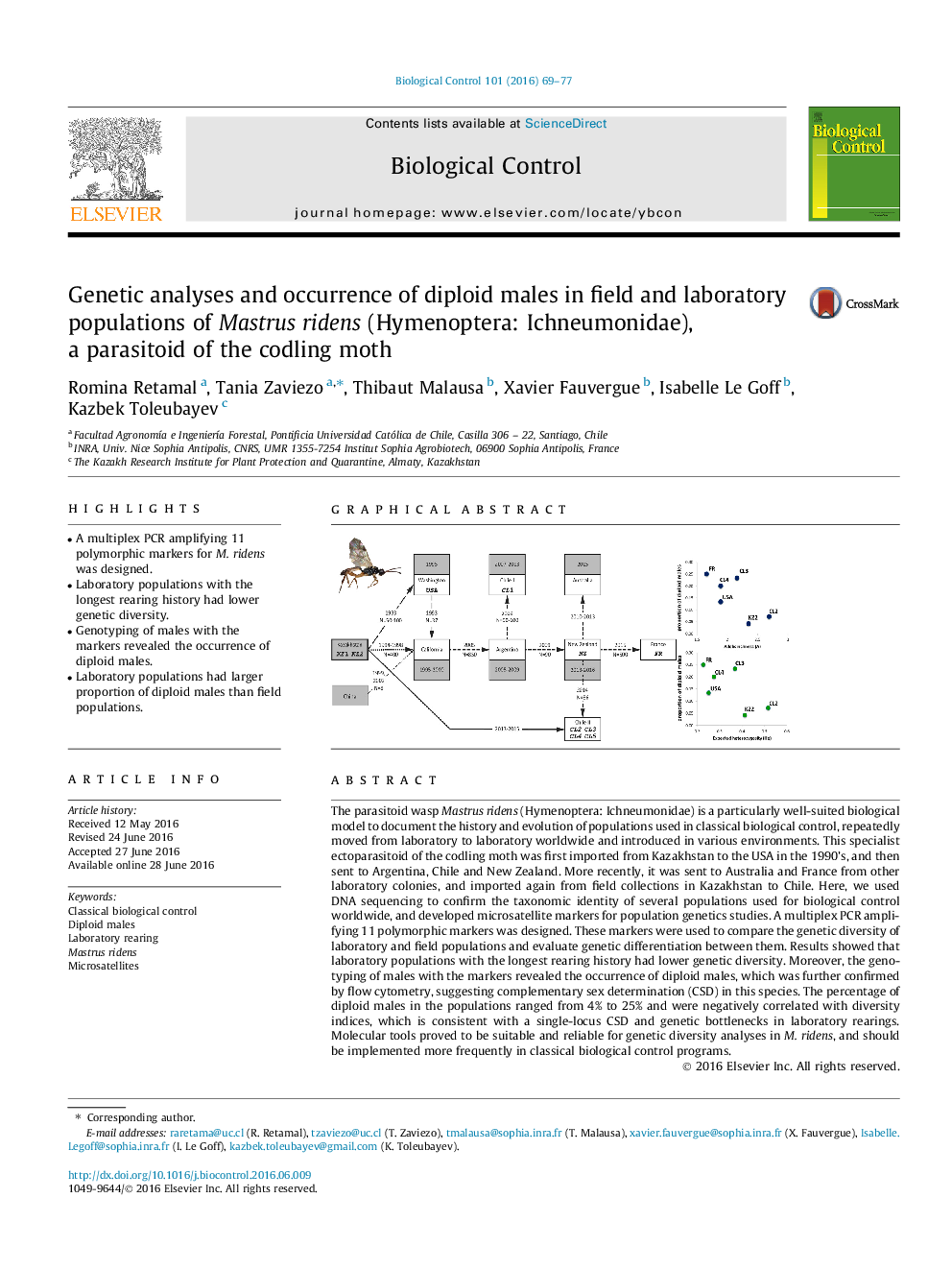| Article ID | Journal | Published Year | Pages | File Type |
|---|---|---|---|---|
| 4503606 | Biological Control | 2016 | 9 Pages |
•A multiplex PCR amplifying 11 polymorphic markers for M. ridens was designed.•Laboratory populations with the longest rearing history had lower genetic diversity.•Genotyping of males with the markers revealed the occurrence of diploid males.•Laboratory populations had larger proportion of diploid males than field populations.
The parasitoid wasp Mastrus ridens (Hymenoptera: Ichneumonidae) is a particularly well-suited biological model to document the history and evolution of populations used in classical biological control, repeatedly moved from laboratory to laboratory worldwide and introduced in various environments. This specialist ectoparasitoid of the codling moth was first imported from Kazakhstan to the USA in the 1990’s, and then sent to Argentina, Chile and New Zealand. More recently, it was sent to Australia and France from other laboratory colonies, and imported again from field collections in Kazakhstan to Chile. Here, we used DNA sequencing to confirm the taxonomic identity of several populations used for biological control worldwide, and developed microsatellite markers for population genetics studies. A multiplex PCR amplifying 11 polymorphic markers was designed. These markers were used to compare the genetic diversity of laboratory and field populations and evaluate genetic differentiation between them. Results showed that laboratory populations with the longest rearing history had lower genetic diversity. Moreover, the genotyping of males with the markers revealed the occurrence of diploid males, which was further confirmed by flow cytometry, suggesting complementary sex determination (CSD) in this species. The percentage of diploid males in the populations ranged from 4% to 25% and were negatively correlated with diversity indices, which is consistent with a single-locus CSD and genetic bottlenecks in laboratory rearings. Molecular tools proved to be suitable and reliable for genetic diversity analyses in M. ridens, and should be implemented more frequently in classical biological control programs.
Graphical abstractFigure optionsDownload full-size imageDownload as PowerPoint slide
